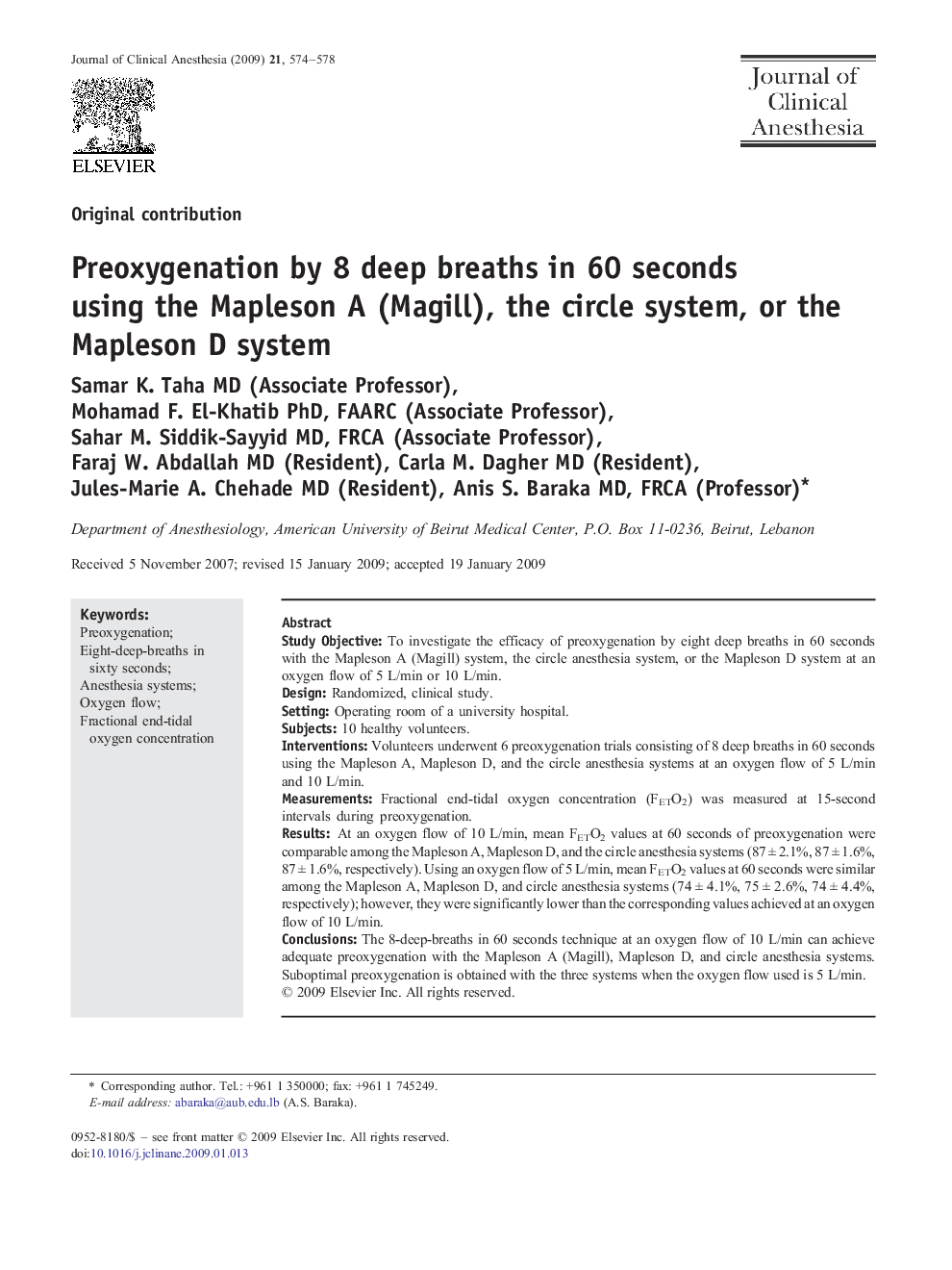| Article ID | Journal | Published Year | Pages | File Type |
|---|---|---|---|---|
| 2763267 | Journal of Clinical Anesthesia | 2009 | 5 Pages |
Study ObjectiveTo investigate the efficacy of preoxygenation by eight deep breaths in 60 seconds with the Mapleson A (Magill) system, the circle anesthesia system, or the Mapleson D system at an oxygen flow of 5 L/min or 10 L/min.DesignRandomized, clinical study.SettingOperating room of a university hospital.Subjects10 healthy volunteers.InterventionsVolunteers underwent 6 preoxygenation trials consisting of 8 deep breaths in 60 seconds using the Mapleson A, Mapleson D, and the circle anesthesia systems at an oxygen flow of 5 L/min and 10 L/min.MeasurementsFractional end-tidal oxygen concentration (FETO2) was measured at 15-second intervals during preoxygenation.ResultsAt an oxygen flow of 10 L/min, mean FETO2 values at 60 seconds of preoxygenation were comparable among the Mapleson A, Mapleson D, and the circle anesthesia systems (87 ± 2.1%, 87 ± 1.6%, 87 ± 1.6%, respectively). Using an oxygen flow of 5 L/min, mean FETO2 values at 60 seconds were similar among the Mapleson A, Mapleson D, and circle anesthesia systems (74 ± 4.1%, 75 ± 2.6%, 74 ± 4.4%, respectively); however, they were significantly lower than the corresponding values achieved at an oxygen flow of 10 L/min.ConclusionsThe 8-deep-breaths in 60 seconds technique at an oxygen flow of 10 L/min can achieve adequate preoxygenation with the Mapleson A (Magill), Mapleson D, and circle anesthesia systems. Suboptimal preoxygenation is obtained with the three systems when the oxygen flow used is 5 L/min.
